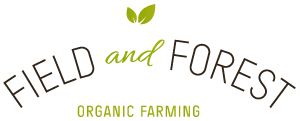
A biorefinery approach
for the development of bioactive cosmetic ingredients from by-products
of medicinal plant processing and plant cell cultivation Nr. 1.1.1.1/19/A/075
The
growing human population creates increasing demand on global ecosystems
for food, medicine and other natural resources. Most of the world’s
habitable land is already occupied by agriculture (50%) and forestry
(37%). The amount of arable land per person is dropping, thus
highlighting a need for improved efficiency of extracting higher
value-added products and services from existing resources.
The European leading industries of food and drinks, cosmetics and chemical production have unused potential of transforming underutilised by-products into high added value products. Europe is the global leader in the chemical industry and cosmetics production, and its food and drink industry reaches an annual turnover of 1.1 trillion EUR.
Most by-products coming from agriculture, cosmetics, food and drink, as well as chemical industries are not utilized and end up in municipal landfills, thus causing serious environmental, economic and social problems. Currently, by-products are handled as waste, while they could be used as ingredients to create new revenue streams and open the doors for new markets. Spinning the mindset and business approaches towards using more innovative, science-based solutions for by-product utilization will have a positive impact on the transition towards a sustainable economy.
Objective
To develop high added value compounds for potential use in cosmetics from by-products of medicinal plant processing and cell cultivation.
Activities
1. Extraction of bioactive compounds from by-products of medicinal plant (Matricaria) processing and in-vitro cell culturing (Dracocephalum, Ribes and Juniperus) using supercritical fluid extraction methodology.
2. Fractionation of polar and non-polar compounds from supercritical fluid extracts of medicinal herb processing and in-vitro cell culturing production.
3. Chemical characterization of extractions and fractions obtained from medicinal plant by-products and estimating their potential in biorefinery using medical plant production and in vitro cell culturing.
4. Characterization of biological activity of extracts and fractions derived from by-products to characterize the safety and specific efficacy claims for cosmetic use.
5. Combination of biorefinery fractions and extracts to generate a composite cosmetic ingredient with enhanced biological activity by using complex analysis of chemical composition data on in-vitro safety and biological activity.
6. Communication and result dissemination focusing on knowledge transfer to scientific community, practitioners and general public.
Results
1. Effective and environmentally friendly extraction and fraction methodology for by-products derived from medicinal herb processing and in-vitro plant cell cultivation.
2. The developed and tested methodology for characterization of chemical composition, biological activity and safety of obtained extracts and fractions.
3. The developed prototype of a composite cosmetic ingredient with enhanced biological activity by combining biorefinery and extracts.
4. Results disseminated through 3 Open Access scientific journal papers, 6 presentations in international conferences and communication with the public through web, social media and outreach events.
Duration: 1st of July 2020 – 30th of June 2023Leading partner: Institute for Environmental Solutions
Partners: SIA “Field and Forest”, SIA “Alternative Plants”
Project scientific manager: IES leading researcher Dr. Ilva Nakurte, [email protected]
Funded by:
European Regional Development Fund, as a part of 1.1.1.1 measure
“Support for applied research” and specific objective 1.1.1 “Improve
research and innovation capacity and the ability of Latvian research
institutions to attract external funding, by investing in human capital
and infrastructure”, Nr. 1.1.1.1/19/A/075 and project partners.
Total budget: 810 878.66 EUR
BACK
